Searching for Mindfulness in Montana
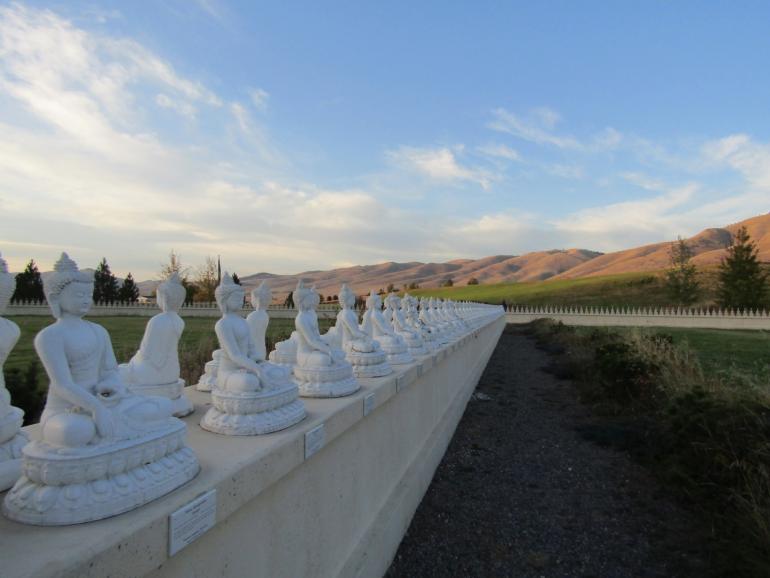
Photo by Renee Carlson
The poet W.H. Auden called the twentieth century the “Age of Anxiety.” But Auden was lucky enough (let me reiterate: lucky) to die in 1973, long before the internet, social media, the threat of identity theft, cyberterrorism, murder hornets, the eradication of the bees, glacial melt, antibiotic-resistant germs, trans fats, ISIS, and Montana’s exorbitant property taxes. Mr. Auden went blissfully into the afterlife, ignorant of all the things that he should have spent his last few hours dreading.
But not me! I have anxiety to spare, and I set a little time aside every day to be nervous about each and every one of those things in turn, furrowing my brow and intoning worried-sounding mumbles into my morning coffee. Maybe you’re the same way.
Because I know I’m not alone—according to a 2013 study, Americans spend $1 billion on self-help books and audiobooks every year. Since 2015 some 2,500 meditation and mindfulness apps have been launched, and in 2019 (before Covid gave us another reason to be anxious) the top ten of those apps brought in more than $150 million. Americans are anxious, and there are plenty of people out there willing to try to make you feel better, for a buck or two.
Many of the apps, self-help books and videos, and so on, make promises that sound good but can’t be quantified, like saying that you will be “10% happier” if you stick with their program. But a cynic like me asks, “How can that be measured?” and maybe even, “How do you define happiness?”
Because with all the sound and fury around the business of happiness, it’s easy enough to start wondering if “happy” is just a word that greeting card companies invented to put before “birthday.”
Even so, I’m often told I should try new things, and in truth, I recognize in myself a propensity for curmudgeonly behavior. So maybe I ought to attempt something I wouldn’t ordinarily try—like meditation. After all, who couldn’t use 10% more happiness?
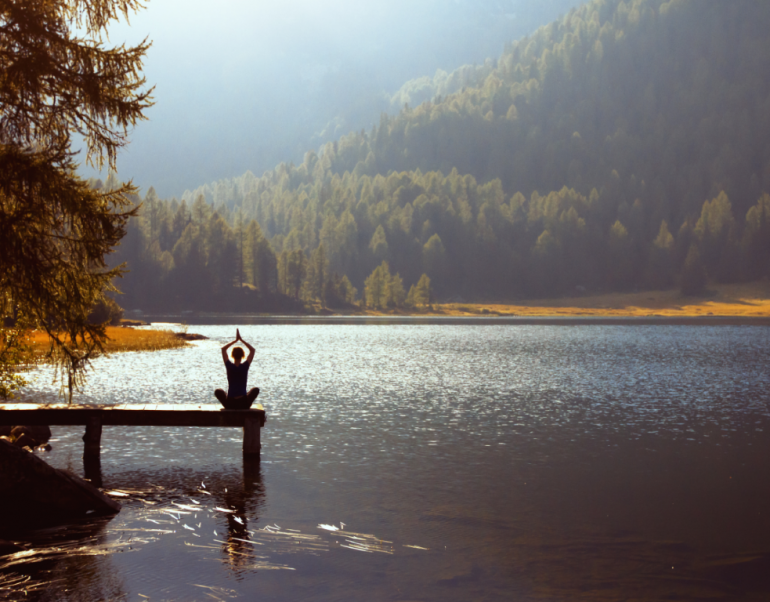
And it might be worth pointing out that I might have an anti-meditation bias, may even be a little bit addicted to my anxiety, much as someone a little more sane might nurse a hobby or project. Well, maybe enough is enough. Maybe it’s time to at least try meditation.
There’s no more fitting place to try than the Garden of One Thousand Buddhas, Montana’s own Tibetan Buddhist botanical garden and meditation space. The remarkable construction, begun in 2000 and still under construction, is the brainchild of Tibetan Buddhist organization Ewam International, which aims to “spread and cultivate spiritual awareness in the West through philosophical and psychological discussion, as well as medicine.” What better place could there be to get mindful?
But before I can do that, I have to reckon with a difficult question: what is meditation? And do I have to become Buddhist to practice it?
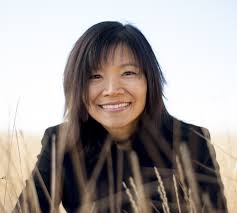
That’s a somewhat flippant question, I realize, but one which may still concern some who might otherwise be open to the experience. So I decide to ask Elaine Huang, owner of Embodiment of Freedom, a small meditation and self-help practice that aims to “empower people to embody more freedom.” Elaine discovered meditation in her mid-twenties and has found in the decades since that it has been a consistent and profoundly helpful experience to her—so much so that she has devoted her life to educating people about what she considers to be a revolutionary way to manage anxiety.
Or perhaps not so revolutionary, since it’s been around for thousands of years. As Elaine points out, “Neuroscience is now backing up what holistic traditions have known for thousands of years by validating the efficacy of the mental and physical benefits of meditation practices.”
She’s right, too. Hundreds of studies have shown exactly that—there are myriad benefits to meditation, especially for the anxious. And even the most critical studies are forced to admit that meditation shows beneficial effects. So my next question for Elaine is a practical one. Do I have to convert to Buddhism to meditate effectively? Will I have to wear one of those orange robes you see on lamas and monks?
It turns out I won’t have to. Unless I want to. “It can be entirely secular,” she tells me. “You can do it just for the benefit of improving your sense of peace, reducing stress, helping to heal or alleviate stress-related disorders. The emotional benefit has been known to lessen anxiety, improve depression.”
But, she is quick to point out, “Meditation alone is not enough. Meditation can be used as a way of spiritually bypassing issues that need to be addressed in therapy or counseling. You might feel good, but you’re not really tending to the root of what’s making you not feel good. You can’t just say, ‘I’m fine now.’ You want to use meditation as a way to address emotional and physical suffering, not as a way to avoid it.”
Part of me is disappointed not to hear her proclaim meditation a cure-all panacea for the mind. That would have made it easier to dismiss.
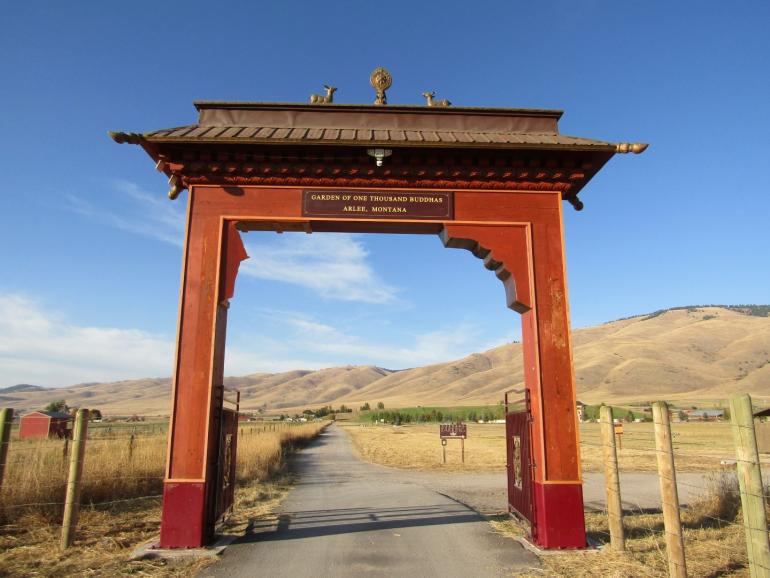
Photo by Renee Carlson
But thinking of meditation as a moving target, a work-in-progress, or as a tool (potentially one of many) in our self-care toolbox casts the practice in a different light. Without the mystical associations, I find I am much more willing to try.
And so, after asking Elaine for a very simple introductory meditation to start me off, I headed for the Garden of One Thousand Buddhas where, I hoped, I would achieve one-ness with the universe or, at least, a modicum of peace for an afternoon.
But, before I went, I thought I’d better send an email to Namchak Khen Rinpoche Ngawang Gelek, one of the Tibetan Buddhist monks at the Garden. I asked him what he thought about Montana as a place to meditate, and he sent his answer back, courtesy of his translator Justin Kirkwood. He said that “Some of the ways that we can practice meditation are particularly well-suited for Montana. For example, we have meditation where you are instructed to gaze at the sky, ones where you should sit on top of a mountain, and others where you should be alone in a forest, all of which would be hard to practice if we were in a big city like New York, but which are perfectly suited to Montana... I haven’t been to too many places around Montana, but with its clean air, mountains, natural beauty, and vast, open skies I think that it is a great place to meditate.”
So, in the middle of the beautiful location in the Jocko Valley, I sat cross-legged (maybe the first time I’ve done so since third or fourth grade) and put my fingers into what I assumed was a meditative pose. I closed my eyes, straightened my back, and tried to empty my head of thoughts. I heard the flapping of prayer flags, and the cry of a circling bird of prey overhead. Trying not to focus on any particular thought, I focused instead on what it felt like to breathe and remembered another thing Elaine had told me:
“Your mind might wander off to your thoughts, and that’s not a problem. You’re still going to be aware of sounds that you hear in the background, but you’re keeping your attention on your breath and if your attention goes somewhere else, it’s no problem. Just gently refocus back onto your breath.”
So I do. And before I know it, ten minutes have passed, and then twenty. And I have to admit, almost begrudgingly, that I feel very calm, refreshed, and aware. Is it from the brisk air? The exercise I got walking around the perimeter of the Garden? Or is it from the simple meditation I’ve just performed?
Will I keep trying it? I think I might. Should you? Should all of us who might be feeling a little anxious these days? Maybe we should.
After all, anything that makes us more aware of how lucky we are to be living here in Montana, and makes us feel better too, can’t be wrong.
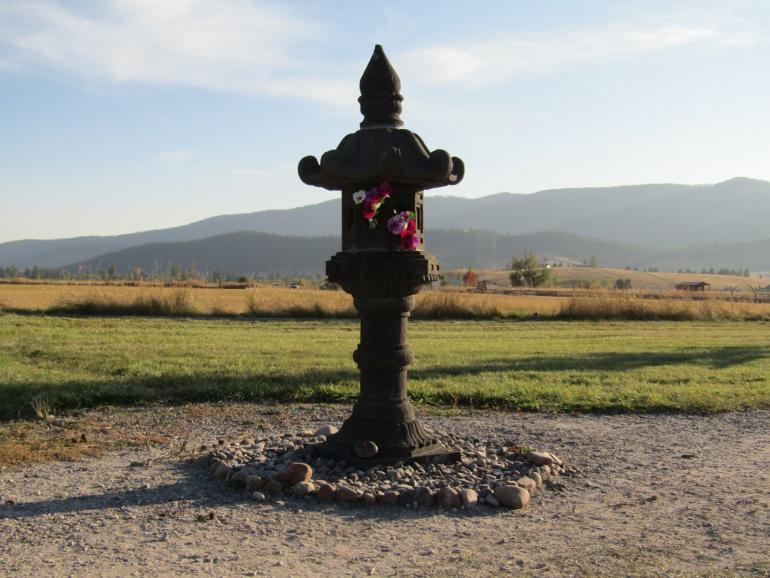
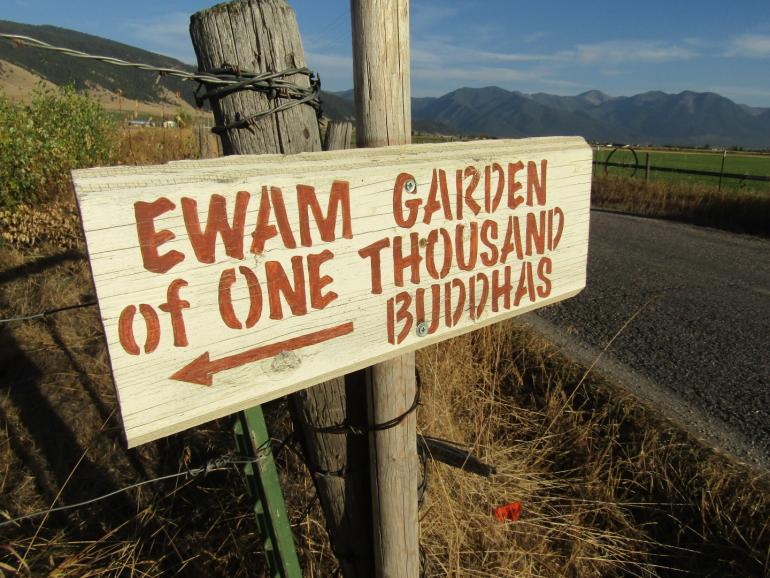
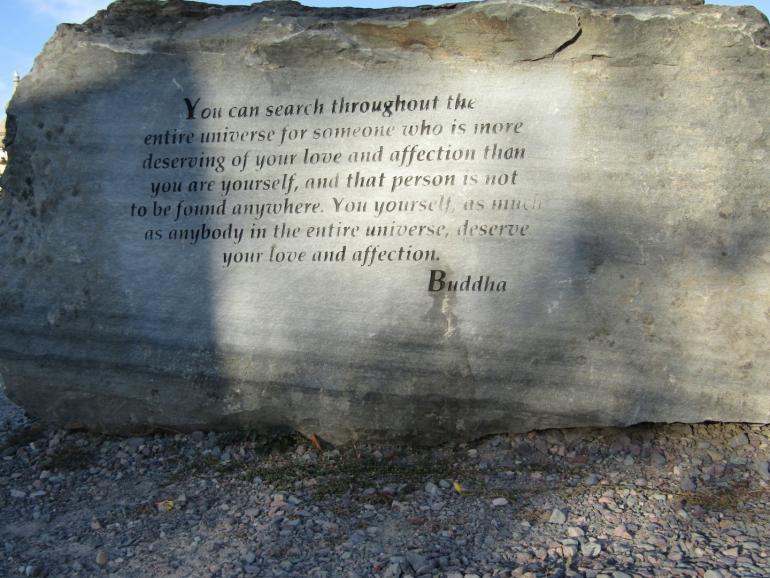
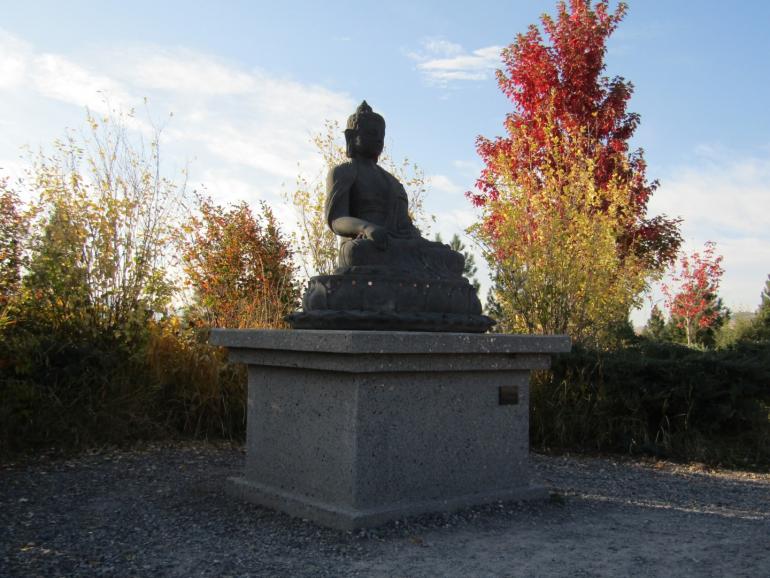
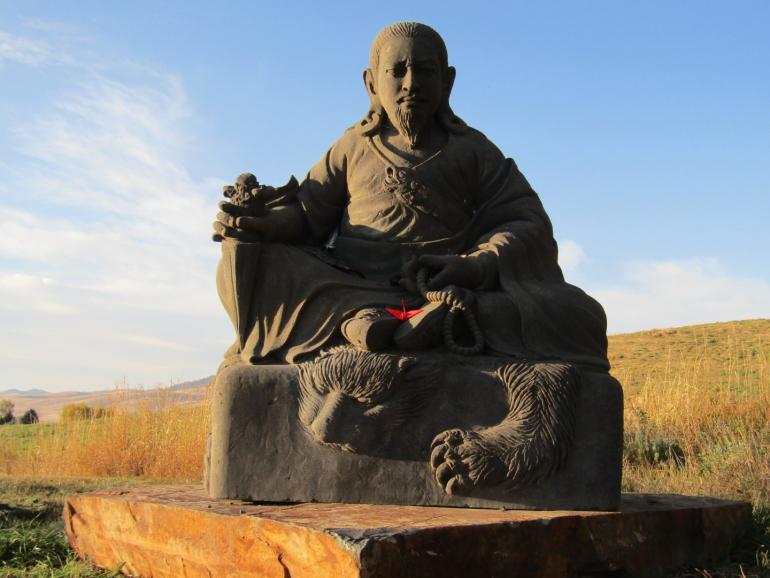
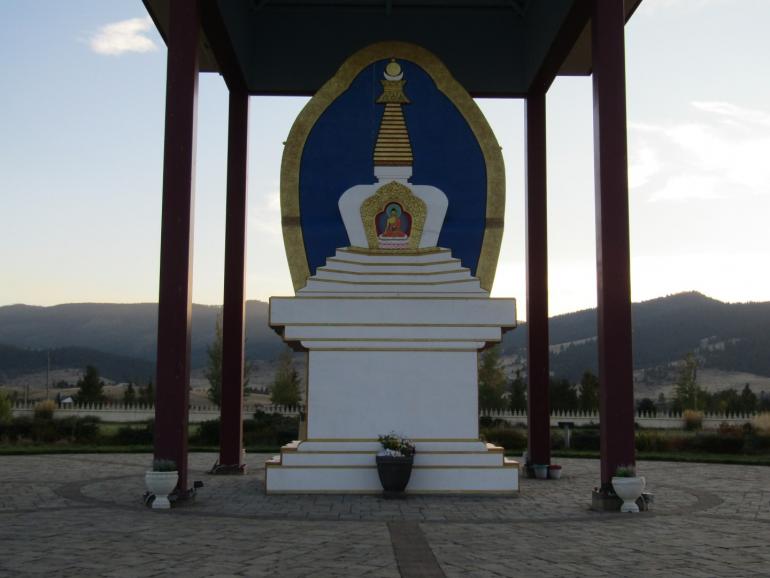
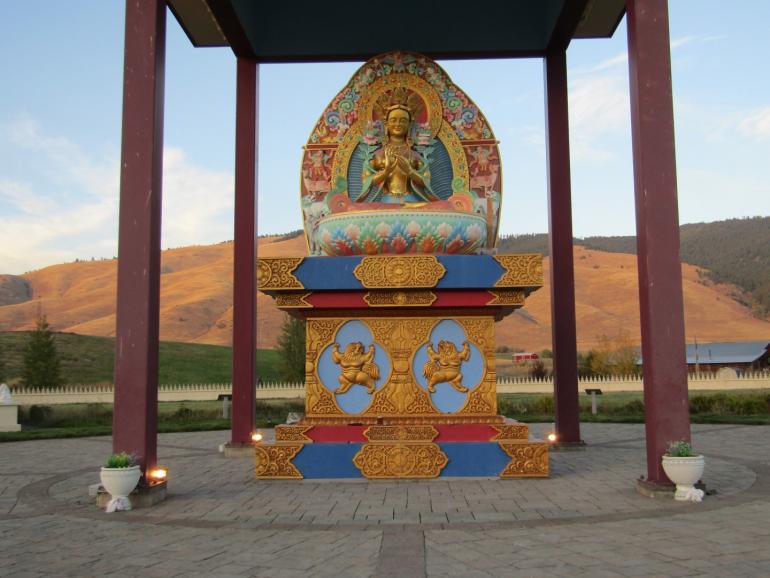
Leave a Comment Here